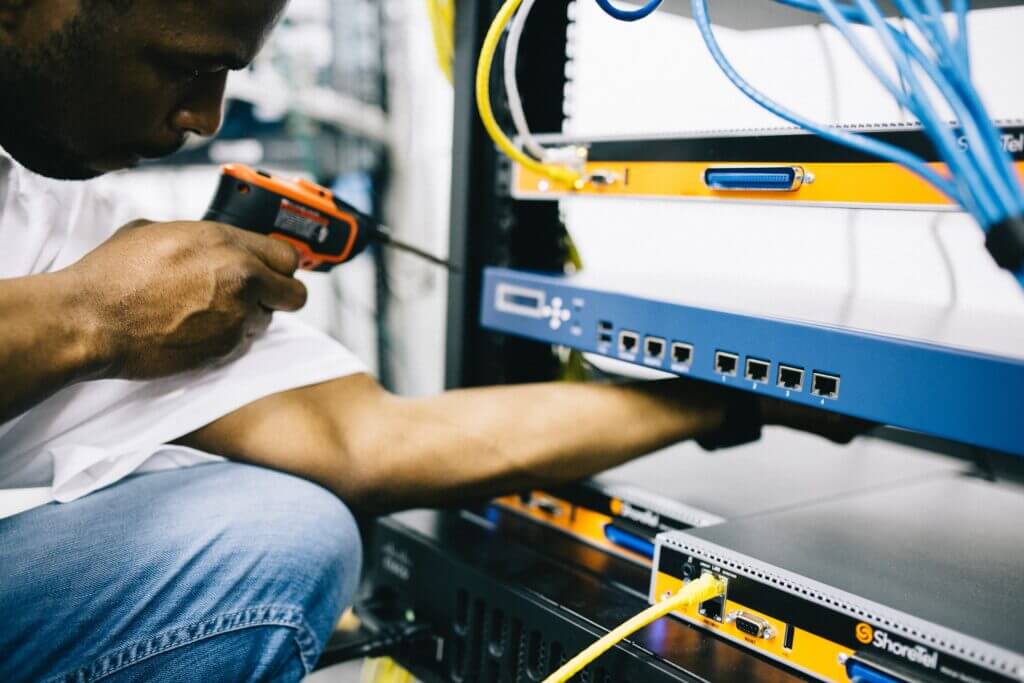Structured cabling is an organized approach to your business’s IT network and infrastructure. So what gives the system that structure? The way cabling and equipment are laid out and organized in the structured system is governed by some stringent rules and regulations. So, what are some of the main structured cabling standards?
The ANSI/ITA-568 and ISO/IEC 11801 are the two big names you need to know for structured cabling. If those acronyms sound confusing, don’t worry. We’re breaking them down and explaining what they regulate within the world of structured cabling.
What Are the Main Structured Cabling Standards?
The ANSI/TIA-568
The Telecommunications Industry Association (TIA) originally wrote the 568 standards for structured cabling. Over the years, the TIA has revised their standards for cabling, especially as newer technologies have evolved in telecommunications. With the use of fiber-optic cabling on the rise, the 568 standards have been revised significantly in recent years.
The TIA-568 standards specifically deal with performance and compatibility for different kinds of wiring and cabling. Since structured cabling needs to work throughout a commercial building or throughout a campus, these standards are helpful in regulating the performance specifications of the most commonly used cables and cable terminations. Installation, testing and even the distance of cabling are three major parts of structure cabling that fall under the TIA 568 standards.
The ISO/IEC 11801
The ISO/EIC is the international standard for information technology systems. As the name suggests, it standardizes and regulates cabling systems within an IT network. The ISO standards are reviewed every five years, with the last major review and revision taking place in 2017.
Section 11801 deals with the general standards for cabling in a commercial building. The section covers data, voice and video services for cabling, along with specifications for both copper cabling and fibe-optic cabling.
What These Standards Govern
The ANSI/TIA-568 and ISO/IEC 11801 are meant to regulate and govern cabling so manufacturers, data cabling companies and other vendors are using products that are up to a standard of specifications. If every manufacturer used a different type of cable, it would be near impossible to guarantee performance for structured cabling systems or IT networks.
Standards for electric and telecommunication products have been in place for decades. In fact, the IEC first began standardizing things like electric plugs and sockets because there were too many on the market! Each appliance manufacturer might have had its own kind of plug and socket. Not only was that inconvenient, but it also led to safety risks. The standards for structured cabling exist for the same reason. Having these strict standards and specifications in place for any kind of electrical equipment will help guarantee your cabling system works as it should and helps minimize risk.
Cabling Standards During Installation
When a data-cabling company installs a structured cabling system, the specialist should be following the ANSI/TIA and ISO/IEC standards for the layout and physical installation of the cables. It’s important that the specialist carefully lays out the cable and necessary equipment for your new system with future use in mind. If you ever add new technology or new cabling, you need to make sure it all works. This is one reason why the TIA standards in particular mandate that cables be backward-compatible. That means any newer cables have to be able to support and work with an older system. Everything within the specifications of these standards ensures performance and reliability.

Conclusion
Standards for structured cabling help both data-cabling companies and businesses that want to install a system of their own. The ANSI/TIA and ISO/IEC standards help ensure that business owners and their employees’ networks offer the best performance possible and have the capabilities to keep up with the day-to-day needs. Whether it’s for voice, video or just data use, structured cabling is a great investment for any business.